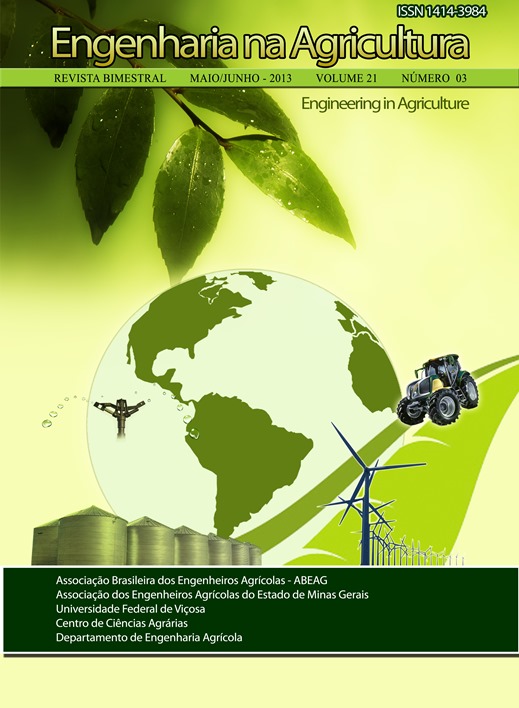HARVEST QUALITY AND SOIL PHYSICAL ATTRIBUTES: IMPLICATIONS ON THE PLANNING OF REGROWTH FOREST STANDS
DOI:
https://doi.org/10.13083/reveng.v21i3.356Keywords:
custos, eucalipto, produtividade, reformaAbstract
The objective of this study was to evaluate the consequences of timber harvesting with the use of chainsaws and the physical properties of soil in two regrowth eucalyptus stands. The study was conducted at the Água Limpa Farm, belonging to the University of Brasília (UnB). Two areas were chosen to undergo the regrowth process. Area 1 (AR1) was harvested in 2010 and area 2 (AR2) was harvested in 2004 and abandoned for regeneration. In AR2 the height of the stumps was outside the recommended technical standards (<5 cm), which prevents the entry of forest implements for soil preparation. An inventory was performed and the yield and operating costs of lowering these stumps was determined. In both the AR1 and AR2, the parameters of penetration resistance, density and hygroscopic moisture of the soil were determined. Soil samples were characterized as highly plastic with lateric clay properties. The maximum values of RP were concentrated in soil depths of 25 to 35 cm and there was little variation in soil density between the two areas, with values close to 1.0 kg m-³. In AR2 the amount of wood wasted in the form of stumps was approximately 13.70 m³ ha-1, requiring 16.7 hours to lower the stumps of one hectare at a cost of R$ 492.48 ha-1 (one dollar equals R$ 1.70) .Downloads
Downloads
Additional Files
Published
How to Cite
Issue
Section
License
Authors who publish with this journal agree to the following terms:
The author(s) authorize(s) the publication of the text in the journal;
The author(s) ensure(s) that the contribution is original and unpublished and that it is not in the process of evaluation by another journal;
The journal is not responsible for the views, ideas and concepts presented in articles, and these are the sole responsibility of the author(s);
The publishers reserve the right to make textual adjustments and adapt texts to meet with publication standards.
From submission, the author is fully conceding the paper's patrimonial rights to the publication, but retaining the owner of its moral rights (authorship and paper's identification) according to Creative Commons Attribution-Noncommercial.








 Licensed by
Licensed by 